한식 읽기 좋은 날
Exploring Regional and Native Pumpkin Dishes
Latest Hot HANSIK

In an old proverb, there's a saying, "A hobak (pumpkin) rolls in unexpectedly," which refers to unexpected luck. From old times, pumpkins have been considered precious ingredients. Pumpkins, rich in nutrients, are cherished across Korea and have given rise to various regional specialties and unique local dishes. In this issue, we introduce local pumpkin dishes that reveal the characteristics and personality of each region. Let's discover the new charm of pumpkins along with hidden local pumpkin cuisine.

Hobakbeombeok (thick mixed-grain porridge made with pumpkin) from Chungcheong-do
Since old times, people in Chungcheong-do (Chungcheong Province) have enjoyed making food using neulgeunhobak (aged pumpkin), such as hobakjuk (pumpkin porridge), Hobakbeombeok (thick mixed-grain porridge made with pumpkin), , hobaktteok (pumpkin rice cake), and stews. Among them, hobak beombeok is made by kneading neulgeunhobak along with red beans, chestnuts, green soybeans , sweet potatoes, and other grains, into a paste-like consistency. It is considered one of the representative native pumpkin dishes.
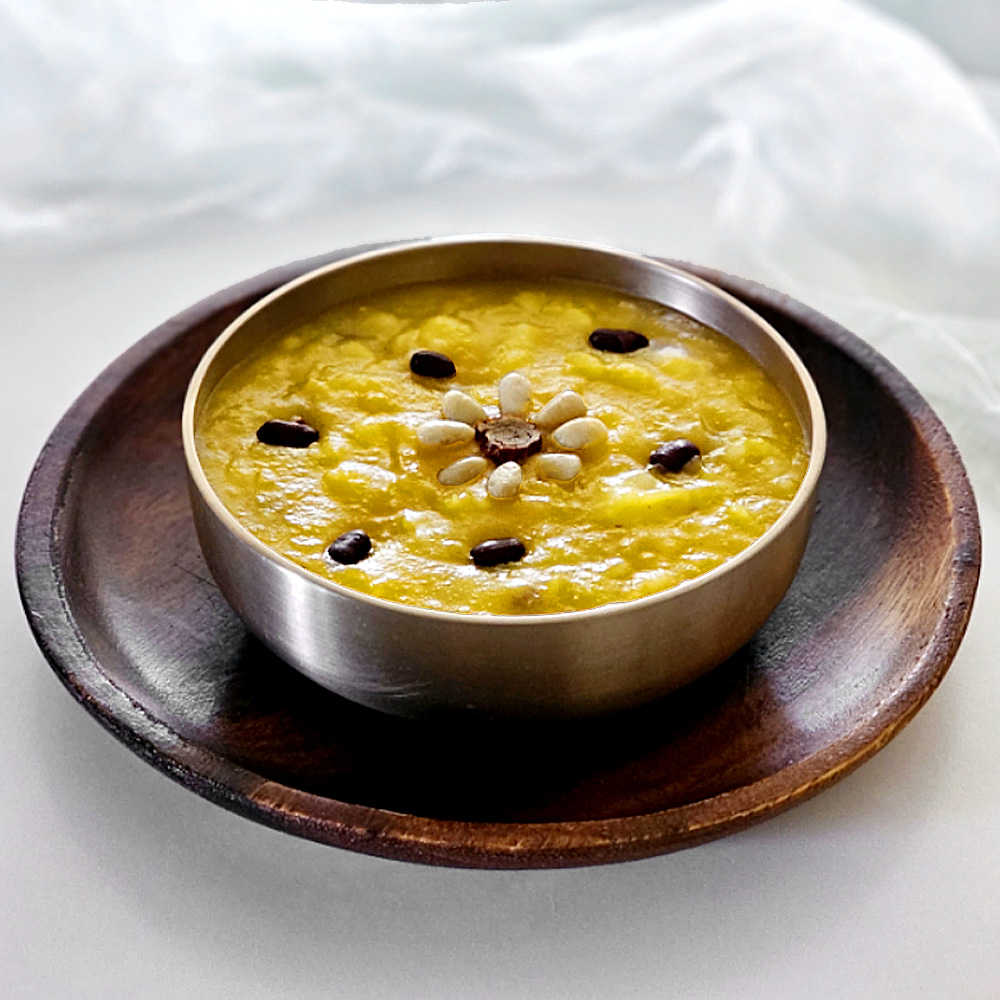
In the Chungcheong-do region, the cooking method for hobakbeombeok varies slightly by locality. In general, the traditional method involves scraping out the seeds of a neulgeunhobak (aged pumpkin) and placing it upside down in a pot. Water is then poured in along with red beans and kidney beans, and the mixture is boiled until the pumpkin is cooked. Once the pumpkin is tender, the flesh is scraped out and added back to the pot along with glutinous rice flour and millet flour. This results in a dish similar in appearance to hobakjuk (pumpkin porridge) but with a richer flavor due to the variety of ingredients used.
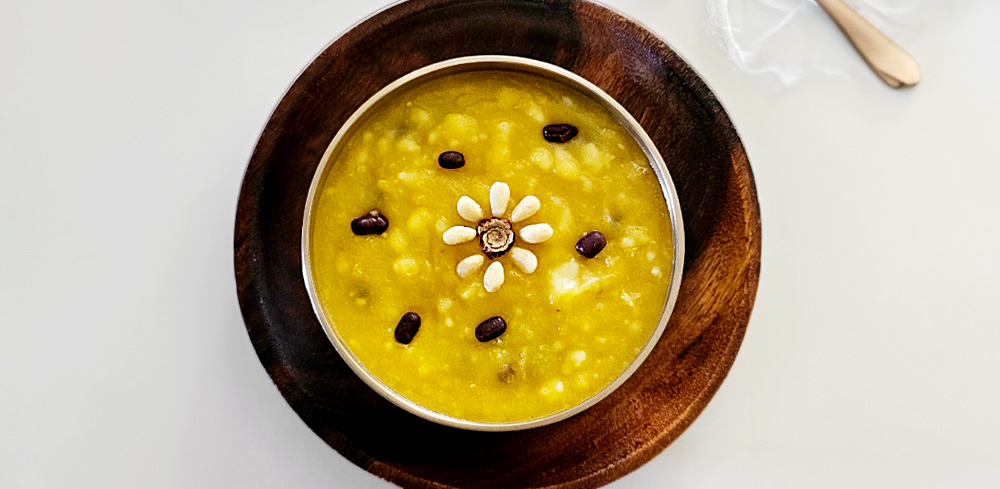
As pumpkin ripens, its sweetness increases due to the increased sugar content. The sweetness of well-ripened pumpkins is unparalleled compared to other vegetables. Additionally, the sugar in ripe pumpkins aids in digestion and absorption, making it beneficial for those with weak digestion or recovering patients. Furthermore, pumpkins are rich in nutrients such as vitamins, iron, and antioxidants, making them suitable for postpartum recovery meals or for consumption during the recovery period after an illness.

Hobagyeot (pumpkin taffy) from Ulleungdo Island
Hobagyeot (pumpkin taffy) is known as a representative specialty product of Ulleungdo Island. Originally, it was made using the bark of Machilus thunbergii trees that grew naturally on the island, but as the tree became increasingly rare, pumpkin was used as a substitute. The pumpkin used in making hobagyeot is neulgeunhobak (aged pumpkin), prized for its deep and rich sweetness, making it an excellent ingredient for making taffy.
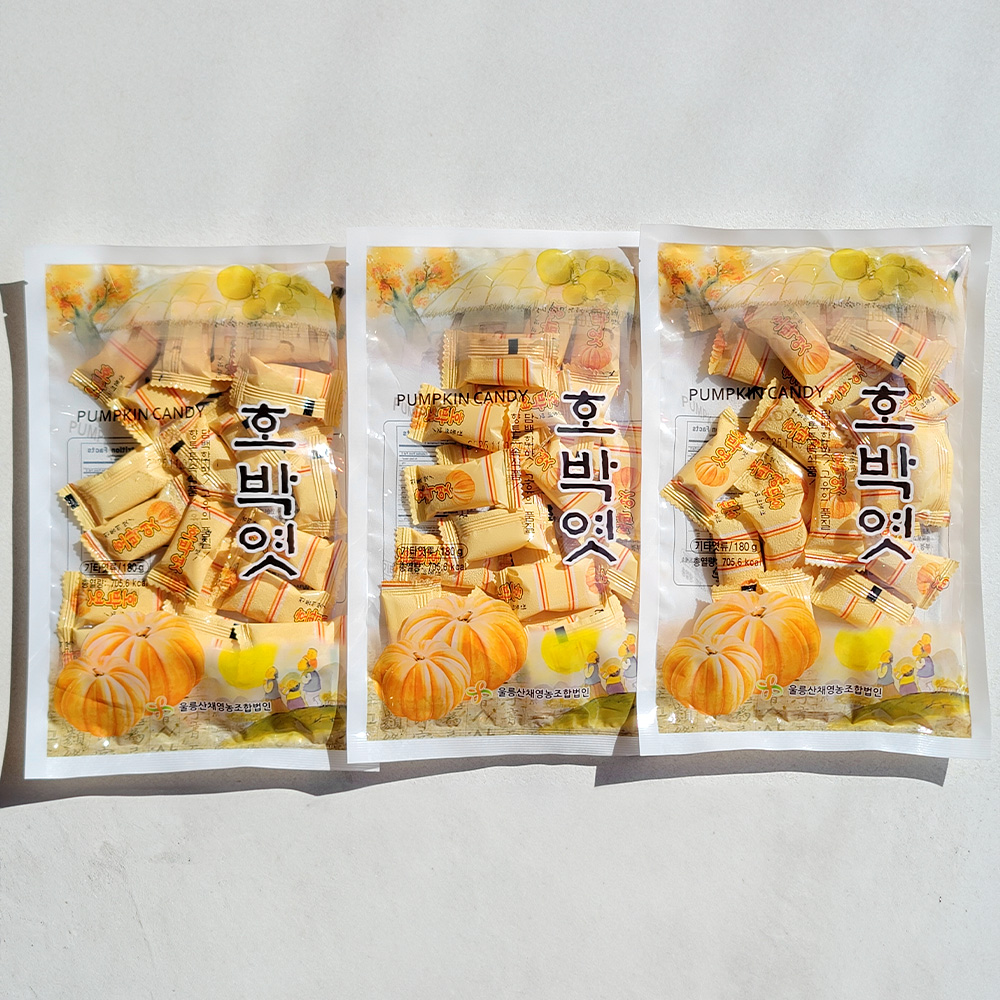
To make hobagyeot, boil soaked rice, add neulgeunhobak and cook it thoroughly, then add syrup water and simmer until it thickens, and finally strain the cooked mixture. Since pumpkin itself lacks starch and cannot turn into taffy by itself, taffy is made separately and then pumpkin is added as a supplementary ingredient to enhance the flavor. Modern hobagyeot from Ulleungdo Island contains over 30% pesticide-free pumpkin, resulting in a less sticky texture compared to other taffy and a particularly rich flavor without an overpowering sweetness.
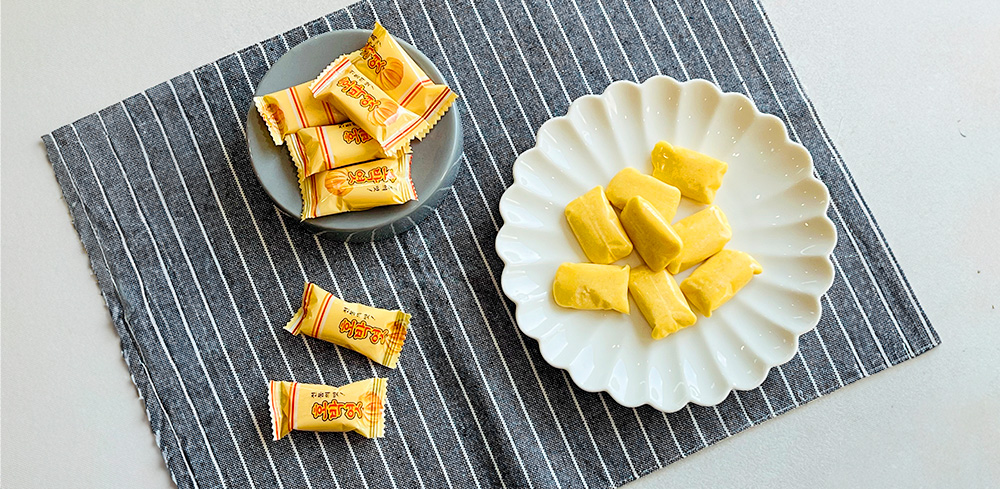
In the Gyeongsangbuk-do region, there is also a variety of hobagyeot called "hobag-ogari-yeot," made by adding dried pumpkin peel during the taffy-making process. Thanks to the advanced technology in preserving the nutrients of pumpkin during processing, hobagyeot is considered synonymous with Korean yeot and is proudly recognized as a specialty product of Ulleungdo Island.

Galchihobakguk (cutlassfish pumpkin soup) from Jeju Island
In autumn, the waters off Seogwipo are teeming with cutlassfish making it the prime time for catching cutlassfish. At the same time, it's also the season when neulgeunhobak (aged pumpkin) maturing in the gardens of each household are starting to look tempting to eat. It is speculated that galchihobakguk has become a local specialty in Seogwipo-si by combining its two major seasonal ingredients, autumn cutlassfish and neulgeunhobak.
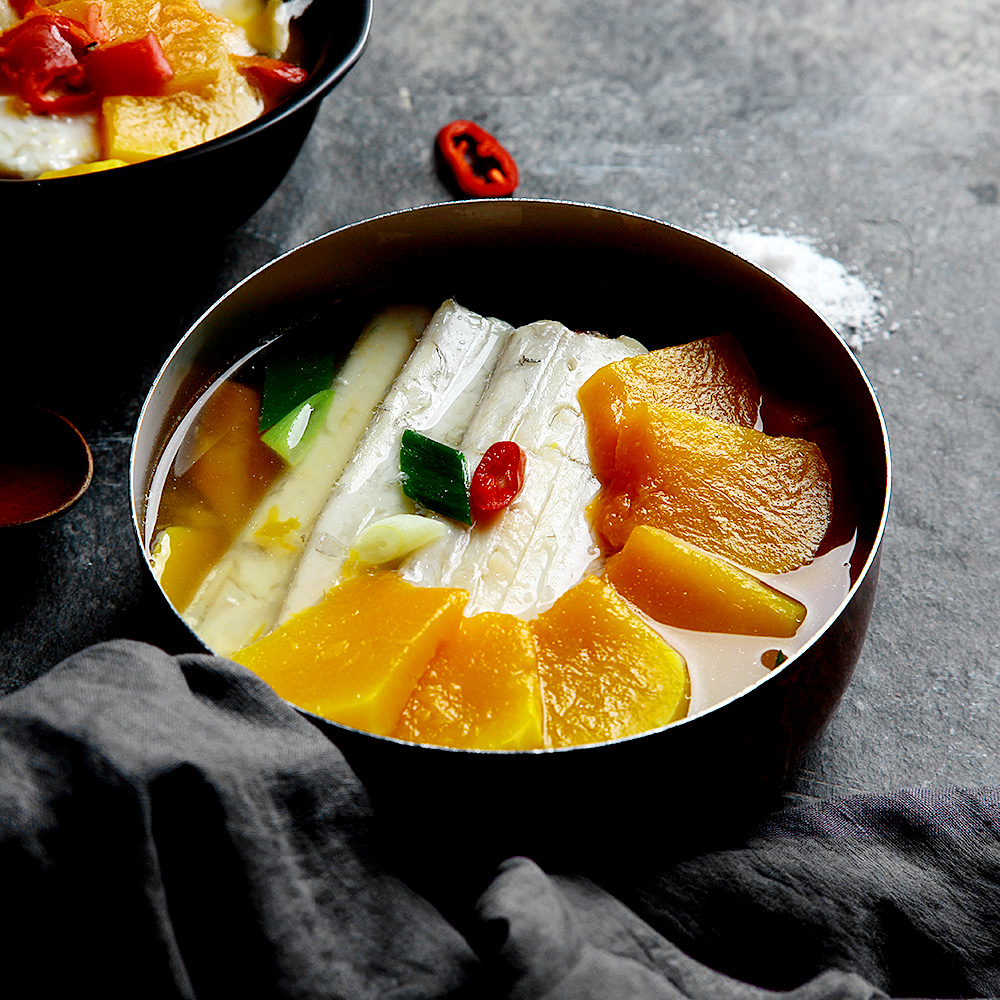
Galchihobakguk is made by boiling cutlassfish with neulgeunhobak or young cabbage. Since the freshness of the fish is crucial to the soup’s taste, this dish can only be enjoyed in places where cutlassfish are caught. It is said that as Jeju locals consider well-matured pumpkins harvested in autumn and plump cutlassfish to be precious and excellent ingredients, they would serve galchihobakguk to their special guests.
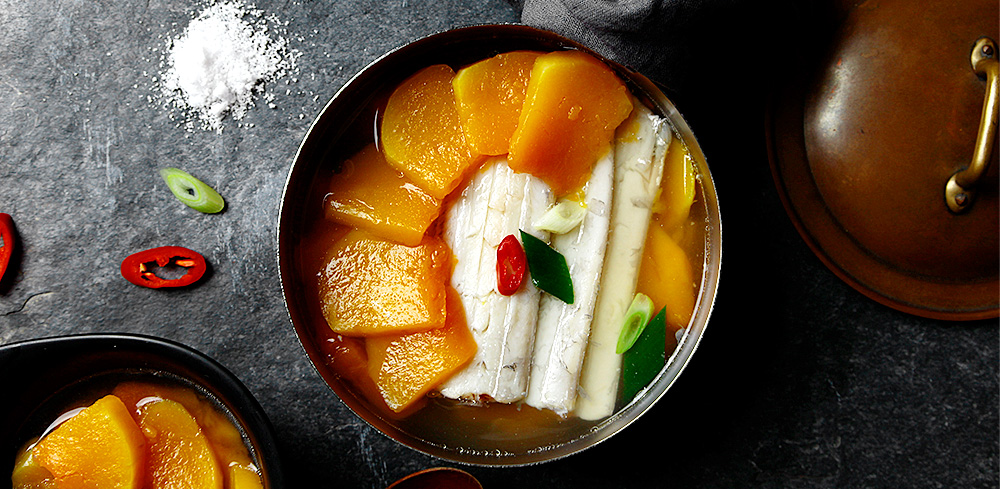
While boiling fish to make soup may seem unfamiliar to some, no unpleasant fishy flavor is felt as only fresh cutlassfish is used. Additionally, the crispness of the green chili, sliced and added with the soft pumpkin, helps to neutralize any fishy odor, resulting in a refreshing and light soup. With its unique refreshing taste, galchihobakguk is highly popular and considered as one of the best local dishes in Jeju-do.

번역 확장 프로그램 설치 안내
-
1. 구글에서 웹스토어 검색
구글에서 웹스토어 검색

-
2. Chrome 웹 스토어 접속
Chrome 웹 스토어 접속

-
3. 파파고 검색
Chrome 웹스토어 파파고 검색

-
4. 확장프로그램
확장 프로그램 -> 파파고 번역

-
5. 파파고 번역 Chrome 추가 확장 추가
파파고 번역 Chrome 추가 확장 추가

-
6. 번역 하기
번역 대상 드레그 후 파파고 아이콘 클릭





